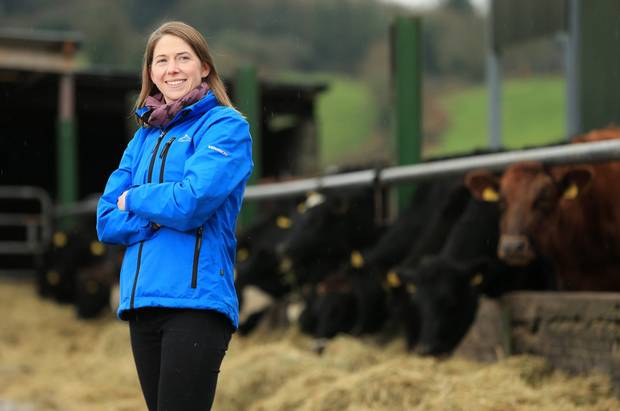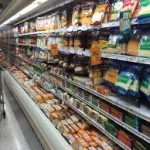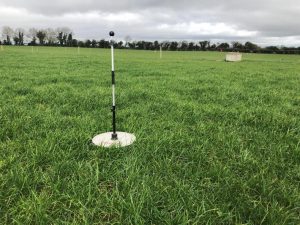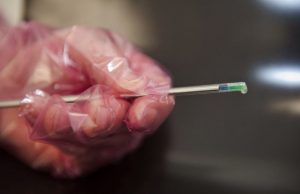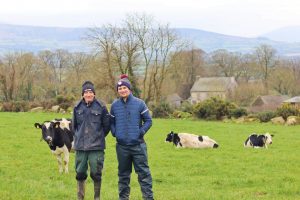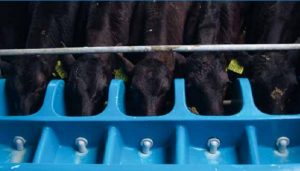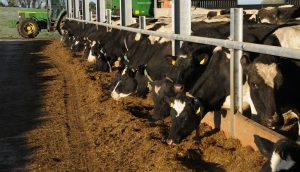
Robots are now routinely milking Irish cows, but farmers are pondering whether they will soon be able to direct the cattle across the road, drive the tractors and plough fields.
Irish farmers of the future will have to adapt to new technology, try to meet the demands of climate change and keep up with the latest consumer food trends and fads.
Earlier this month, the farm lobby showed itself to be highly defensive on the issue of climate change when it attacked elements of an environmental programme in schools.
The teachers’ resource pack produced by An Taisce encourages students to examine the environmental impact of “the meat and/or dairy industry in Ireland”. It also encourages schools to run a “meatless Monday” campaign.
Whether the Irish Farmers’ Association likes it or not, public tastes are changing.
Grace Binchy, insights and trends specialist at Bord Bia, says Irish consumers are cutting down on meat consumption.
The Dietary Lifestyle study by Bord Bia showed that one in three Irish consumers claim to have cut down their consumption of red meat.
The same study shows 22pc of consumers have cut down their consumption of dairy products. These lifestyle trends may take some time to have an effect on Irish agriculture. The numbers shunning meat and dairy completely are still relatively low.
Just 4pc of the population is vegan, and 5pc vegetarian, while 10.6pc are classified as “flexitarian” (meaning they eat moderate amounts of meat).
While middle-class millennials may be going vegan, Irish dairy farmers are being compensated by soaring demand for milk products overseas, particularly in Asia.
Binchy says the rise of plant-based diets will also open up new opportunities for Irish farmers and food producers.
In the coming decades, the Irish farmer may no longer be a man or woman out standing in their own field. If some technological soothsayers are to be believed, they could be sitting inside at home on a computer like an air traffic controller, directing a self-driving tractor as it ploughs a field.
The self-driving tractor wandering down country lanes may not come about any time soon, because of insurance obstacles, but technology is changing the face of farming, as it always has done – and in many cases, it is being harnessed to mitigate the effects of climate change, and farmers are profiting from it.
Turning Slurry into power
At their piggery in Co Kildare, Billy Costello and his son Paul are using pig slurry to generate electricity.
The piggery at Nurney produces over 50,000 pigs every year and as a sideline, the Costellos generate electricity and produce biogas through a process known as anaerobic digestion.
Costello, who also has similar plants in Germany, says: “I got the idea when I saw it being done in other countries, where it is now very popular. The slurry is mixed with food waste and that is turned into energy in the digester.”
Anaerobic digestion is a process through which bacteria break down organic matter without oxygen.
As the bacteria “work,” they generate biogas. The biogas that is generated is made mostly of methane. As well as being used for electricity generations, it can be used to power vehicles.
The Costellos’ unit is big enough to generate enough electricity to power 500 houses, and there is a subsidy for producing green electricity. Billy says he also receives payments from companies wishing to get rid of food waste.
At his farm in Grangeford, Co Carlow, Kevin Nolan also embraces new technology, using computers in many aspects of his work.
Nolan originally harboured an ambition to become a criminologist, but now he uses his forensic skills in a different way to engage in “precision farming”.
“Tillage farmers are becoming a lot more tech savvy,” says the farmer, who grows wheat, barley oats and beans.
“When we take a machine to the field, it is controlled by GPS. That means that if a machine is applying an input such as a fertiliser to make the crop grow, it will spread to the exact width required.
“When the machine passes over ground that it has already treated once, it automatically shuts off.”
Using these techniques, Nolan estimates that he saves up to 7pc on inputs such as fertilisers and pesticides every year.
“It’s not only the farmer that gains from this – it is also the environment,” says the farmer.
Nolan uses Google Drive to record information on his mobile phone while he is out and about on his farm, and this information uploads automatically to his computer, saving him time.
“I also have an app where I can take a picture of a weed and it tells me what it is and how I can treat it.”
Kevin believes that self-driving tractors are likely to be used commercially in Irish agriculture in 10 years’ time.
For insurance and safety reasons, tractors are unlikely to be driving around unaccompanied, however.
“I can see a time where I could be working in a field on one tractor, while another partner tractor will be working in the same field without a driver,” says Nolan. “I would have a master control over that tractor, so that if there is a problem, I would be able to stop it.”
The technology for autonomous tractors is already available in Germany and Japan, but they are not yet in mass production.
Drones are already being used to monitor crops and Nolan says their software is likely to become more sophisticated in the coming years.
Like many go-ahead farmers, Nolan is attracted to renewable energy as an extra source of income.
He has planning permission for a 30-acre solar farm, which would generate electricity.
“Solar farms are a great idea for the countryside,” says Kevin. “The land around them would not be cultivated and it would encourage biodiversity.”
Kevin has not yet pressed ahead with his solar farm, because the tariff for the electricity is not yet high enough.
“The Government has not yet stepped up to the mark when it comes to renewable energy. The tariff paid here is poor compared to that paid to colleagues in other European countries.”
So where will our food come from in the future as the climate changes across the world, and farmers in Ireland and abroad face extreme weather events such as last year’s drought?
Wake-up call
Grace Binchy of Bord Bia says there is likely to be a growing interest in locally produced meat and vegetables as consumers increasingly want to know where their food is coming from.
Food producers may hype up the local origins of food, but in reality a vast quantity of fruit and vegetables that could be grown here are imported, according to the agronomist Dr Richard Hackett.
Hackett says that the Brexit crisis has been a wake-up call when it comes to our food security and our reliance on imports.
While farmers growing crops in Ireland struggle to stay in business, we import 72,000 tonnes of potatoes, 47,000 tonnes of onions, 33,000 tonnes of carrots, and 23,000 tonnes of cabbage every year.
Climate change presents Irish agriculture two great challenges. Firstly, farmer are often first to suffer severe problems during extreme weather events such as droughts, flooding and storms.
Secondly, beef and dairy farmers in particular are coming under pressure to help in the reduction of greenhouse gas emissions.
According to Hackett, pressure to control emission from agriculture and transport, and water shortages in hotter countries that produce our imported vegetables could present food producers in Ireland with new opportunities.
“Over time, the biggest issue with growing crops in many countries will be water availability, but that will not be a problem for us,” says Hackett. “At the same time, many of the countries that produce our food are severely water deficient.”
One of the biggest revolutions on farms in recent years has been the arrival of robots in milking parlours, and these have surged in popularity on Irish farms over the past two years.
A robot known as the Astronaut, produced by the Dutch firm Lely, not only does the milking. According to its advocates, it also monitors the health and well-being of each individual cow.
The most recent Teagasc farm income survey showed that dairying was by far the most profitable agricultural activity in the State with average incomes hitting €86,000. That is almost three times the average farm income, which was estimated at €31,000.
At her dairy farm near Dungarvan, Co Waterford, Gillian O’Sullivan has so far not been tempted to acquire a robot to do her milking. But the winner of Zurich/Farming Independent Farmer of the Year award uses other innovative techniques to improve the efficiency of her farm.
“I don’t think a robot would suit the steep nature of our farm, and I don’t think you can get a robot to bring cows across a road.”
Once-a-day milking
The former vet, who runs the family farm with her husband Neil, milks her dairy herd just once a day, a practice that is considered unusual in Ireland.
By focusing on breeding and genetics, she came to rely on breeds that were more suited to once-a-day milking, such as Jersey cattle.
She found that her herd could produce as much milk as when they were milked twice a day, and the cows were in a better condition.
Dairy farmers are in the crosshairs of environmentalists, because of greenhouse gas emissions from cattle.
O’Sullivan says they can take many measures to mitigate the effects, including using different types of fertilisers and using energy-efficient milk pumps.
“If the production is more efficient, that lowers the carbon footprint,” says O’Sullivan. “We are also using lower emission slurry spreaders that trickle the slurry into the soil in a targeted way, rather than having a spraying effect and releasing ammonia into the air.
“Farmers are really at the forefront of climate change because we have had to deal with the weather extremes of the past 18 months.”
There will continue to be controversy about how agriculture can evolve in a sustainable manner, but demand for food will continue to grow. According to the UN’s Food and Agriculture organisation, the world’s population is expected to grow to almost 10 billion by 2050, boosting agricultural demand by 50pc.
Indo Review
